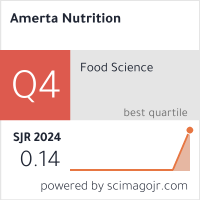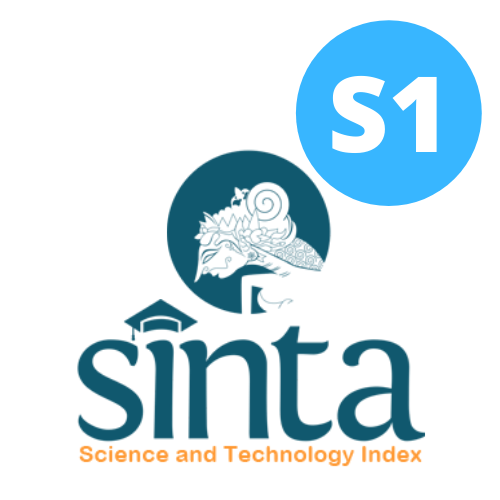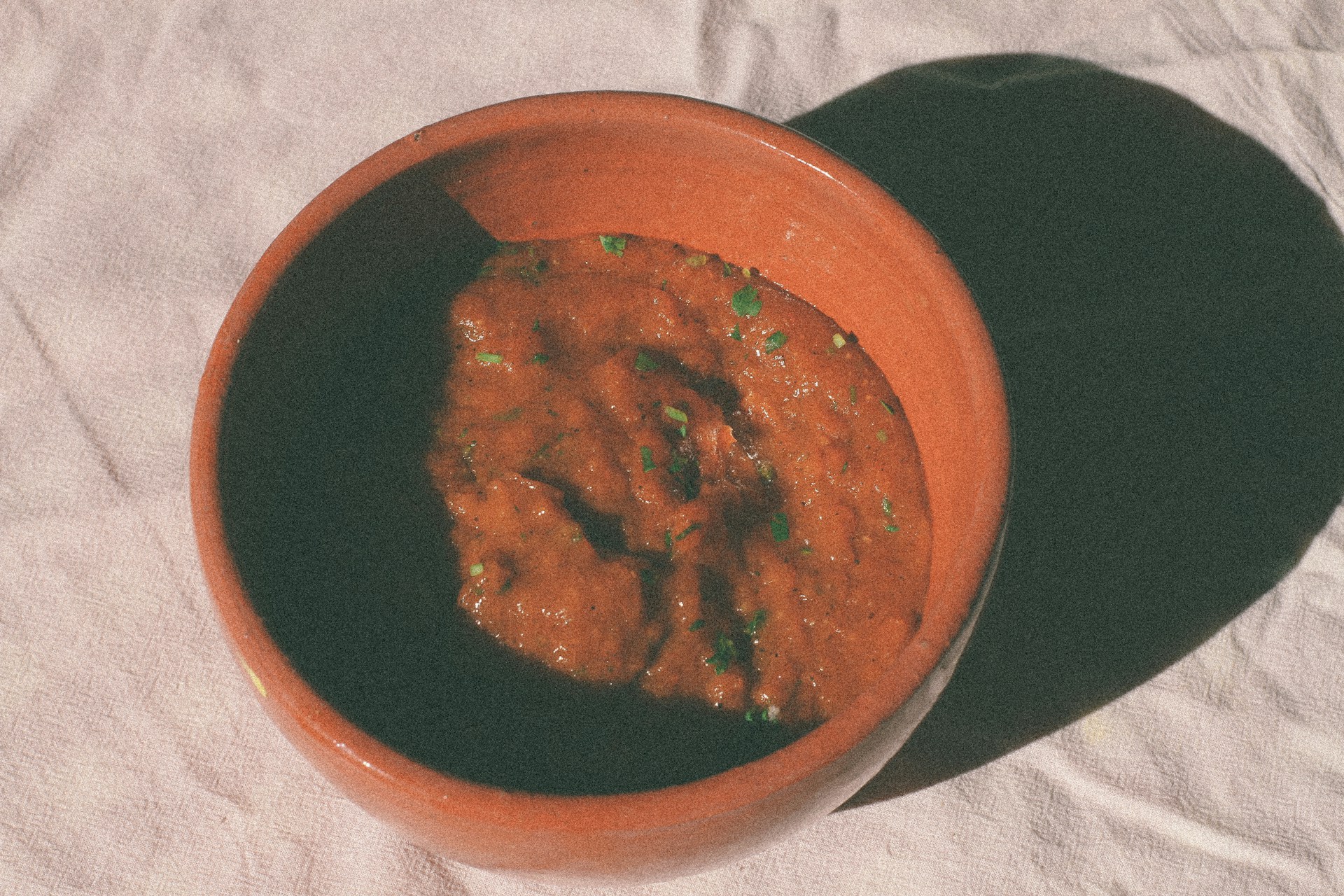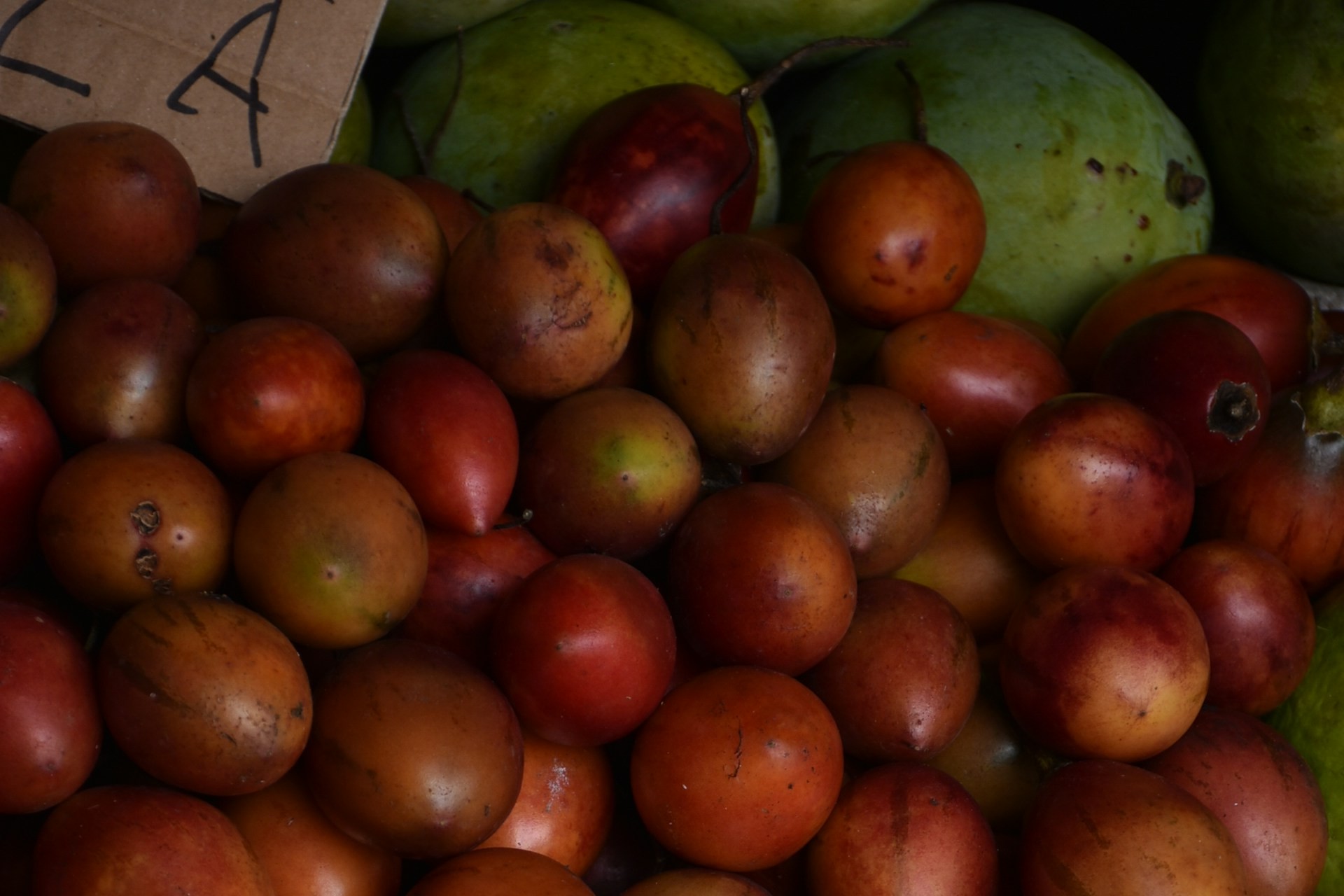Indonesian Mothers’ Perspective on Children’s Health After Caesarean Delivery: A Descriptive Exploration
Perspektif Ibu-Ibu Indonesia tentang Kesehatan Anak Setelah Persalinan Sesar: Sebuah Eksplorasi Deskriptif
Background: Cesarean section incidence increases over time in both emergency and elective cases, or with medical indication and social factors. Despite the usefulness of C-section, parents need to be aware of its effect to child health and the countermeasure.
Objectives: This study aims to explore mothers’ perspectives about the health effects of C-section to children.
Methods: An open-ended survey was conducted on Indonesian mothers as participants in a cross-sectional study. A compilation of descriptive responses was collected at an online parenting community focused on children’s health. The questions are later classified into six particular categories and given an analysis.
Results: A total of 175 inquiries were collected and categorized into 6 groups. In declining pattern, we found parental concern regarding the effect of C-section on the child's immune system (57.14%), nutrition and prebiotics/ probiotics/ synbiotic (22.28%), growth and development (8%), and gastrointestinal system (6.28%). A total of 42 questions (24%) can be categorized into more than one category.
Conclusions: More than half of parents are concerned about the effect of C-section on children’s immune system, and one out of five mothers is concerned about the role of nutrition for their children’s health. However, the awareness and concern regarding C-section health impact on growth and development, and gastrointestinal system are still very low.
Berghella, V., Baxter, J. K. & Chauhan, S. P. Evidence-based surgery for cesarean delivery. Am. J. Obstet. Gynecol. 193, 1607–1617 (2005). https://doi.org/10.1016/j.ajog.2005.03.063.
Sungkar, A. & Basrowi, R. W. Rising trends and indication of caesarean section in Indonesia. World Nutr. J. 4, S2:1–7 (2020). https://doi.org/10.25220/WNJ.V04.S2.0001.
Badan Penelitian dan Pengembangan Kesehatan Kementrian Kesehatan RI. Riset kesehatan dasar RISKESDAS (2013). Available at: https://kesmas.kemkes.go.id/konten/105/0/020417-hasil-riskesdas-2018.
Badan Penelitian dan Pengembangan Kesehatan Kementrian Kesehatan RI. Riset kesehatan dasar RISKESDAS (2018). Available at: https://kesmas.kemkes.go.id/konten/105/0/020417-hasil-riskesdas-2018.
Kementrian Kesehatan Republik Indonesia. Survei Kesehatan Indonesia Dalam Angka (2023).
Javaid, K. et al. Indications of emergency vs elective cesarean section: cross-sectional study done at Holy Family Hospital, Rawalpindi, Pakistan. J. South Asian Fed. Obstet. Gynaecol. 9, 14–17 (2017). https://doi.org/10.5005/jp-journals-10006-1449.
Mylonas, I. & Friese, K. Indications for and risks of elective cesarean section. Dtsch. Arztebl. Int. 112, 489–495 (2015). https://doi.org/10.3238/arztebl.2015.0489.
Lawani, L. O., Igboke, F. N., Ukaegbe, C. I. et al. Perception and socio-cultural barriers to the acceptance of caesarean delivery in a tertiary hospital in Abakaliki, South East Nigeria. Int. J. Womens Health Reprod. Sci. 7, 163–168 (2018). https://doi.org/10.15296/ijwhr.2019.27.
Naa Gandau, B. B. et al. Maternal perceptions about caesarean section deliveries and their role in reducing perinatal and neonatal mortality in the Upper West Region of Ghana: a cross-sectional study. BMC Pregnancy Childbirth. 19, 350 (2019). https://doi.org/10.1186/s12884-019-2536-8.
Polidano, C., Zhu, A. & Bornstein, J. C. The relation between cesarean birth and child cognitive development. Sci. Rep. 7, 11483 (2017). https://doi.org/10.1038/s41598-017-10831-y.
Widodo, A.D. & Juffrie, M. Caesarean section and gut microbiota in children. World Nutrition Journal. 4, S2:8–16 (2020). https://doi.org/10.25220/WNJ.V04.S2.0002.
Masitoh, S., Nurokhmah, S., Rizkianti, A. & Sugiharti, S. Hubungan operasi sesar dengan inisiasi menyusu dini di Indonesia: Analisis data SDKI 2017. Media Penelitian dan Pengembangan Kesehatan. 31, 1 (2021). https://doi.org/10.22435/mpk.v31i1.3430.
Keshet, A. et al. Estimating the effect of cesarean delivery on long-term childhood health across two countries. PLOS ONE. 17, e0268103 (2022). https://doi.org/10.1371/journal.pone.0268103.
Sandall, J. et al. Short-term and long-term effects of caesarean section on the health of women and children. The Lancet. 392, 1349–1357 (2018). https://doi.org/10.1016/S0140-6736(18)31930-5.
Munasir, Z. & Khoe, L.C. Immune development of children born from caesarean section. World Nutrition Journal. 4, S2:17–25 (2020). https://doi.org/10.25220/WNJ.V04.S2.0003.
Rahman, M., Khan, N., Rahman, A., Alam, M. & Khan, A. Long-term effects of caesarean delivery on health and behavioural outcomes of the mother and child in Bangladesh. Journal of Health, Population and Nutrition. 41, 45 (2022). https://doi.org/10.1186/s41043-022-00326-6.
Słabuszewska-Jóźwiak, A., Szymański, J.K., Ciebiera, M., Sarecka-Hujar, B. & Jakiel, G. Pediatrics consequences of caesarean section—a systematic review and meta-analysis. International Journal of Environmental Research and Public Health. 17, 8031 (2020). https://doi.org/10.3390/ijerph17218031.
Keag, O.E., Norman, J.E. & Stock, S.J. Long-term risks and benefits associated with cesarean delivery for mother, baby, and subsequent pregnancies: Systematic review and meta-analysis. PLOS Medicine. 15, e1002494 (2018). https://doi.org/10.1371/journal.pmed.1002494.
Cardwell, C.R. et al. Caesarean section is associated with an increased risk of childhood-onset type 1 diabetes mellitus: a meta-analysis of observational studies. Diabetologia. 51, 726–735 (2008). https://doi.org/10.1007/s00125-008-0941-z.
Thavagnanam, S., Fleming, J., Bromley, A., Shields, M.D. & Cardwell, C.R. A meta-analysis of the association between caesarean section and childhood asthma. Clinical and Experimental Allergy. 38, 629–633 (2008). https://doi.org/10.1111/j.1365-2222.2007.02780.x.
Blustein, J. & Liu, J. Time to consider the risks of caesarean delivery for long term child health. BMJ. 350, h2410 (2015). https://doi.org/10.1136/bmj.h2410.
Azad, M.B. et al. Gut microbiota of healthy Canadian infants: profiles by mode of delivery and infant diet at 4 months. CMAJ: Canadian Medical Association Journal. 185, 385–394 (2013). https://doi.org/10.1503/cmaj.121189.
Bäckhed, F. et al. Dynamics and stabilization of the human gut microbiome during the first year of life. Cell Host & Microbe. 17, 690–703 (2015). https://doi.org/10.1016/j.chom.2015.04.004.
Biasucci, G., Benenati, B., Morelli, L., Bessi, E. & Boehm, G. Cesarean delivery may affect the early biodiversity of intestinal bacteria. The Journal of Nutrition. 138, 1796S–1800S (2008). https://doi.org/10.1093/jn/138.9.1796S.
Francavilla, R., Cristofori, F., Tripaldi, M.E. & Indrio, F. Intervention for dysbiosis in children born by C-section. Annals of Nutrition and Metabolism. 73, Suppl. 3:33–39 (2018). https://doi.org/10.1159/000490847.
Dominguez-Bello, M.G. et al. Delivery mode shapes the acquisition and structure of the initial microbiota across multiple body habitats in newborns. Proceedings of the National Academy of Sciences of the United States of America. 107, 11971–11975 (2010). https://doi.org/10.1073/pnas.1002601107.
Shao, Y. et al. Stunted microbiota and opportunistic pathogen colonization in caesarean-section birth. Nature. 574, 117–121 (2019). https://doi.org/10.1038/s41586-019-1560-1.
Kartjito, M.S. et al. Defining the relationship of gut microbiota, immunity, and cognition in early life—a narrative review. Nutrients. 15, 2642 (2023). https://doi.org/10.3390/nu15122642.
Adlerberth, I. & Wold, A. Establishment of the gut microbiota in Western infants. Acta Paediatrica. 98, 229–238 (2009). https://doi.org/10.1111/j.1651-2227.2008.01060.x.
Matamoros, S., Gras-Leguen, C., Le Vacon, F., Potel, G. & de La Cochetiere, M.F. Development of intestinal microbiota in infants and its impact on health. Trends in Microbiology. 21, 167–173 (2013). https://doi.org/10.1016/j.tim.2012.12.001.
Dogra, S. et al. Dynamics of infant gut microbiota are influenced by delivery mode and gestational duration and are associated with subsequent adiposity. mBio. 6, e02419-14 (2015). https://doi.org/10.1128/mBio.02419-14.
Li, Y. et al. The effect of breast milk microbiota on the composition of infant gut microbiota: a cohort study. Nutrients. 14, 5397 (2022). https://doi.org/10.3390/nu14245397.
Fehr, K. et al. Breastmilk feeding practices are associated with the co-occurrence of bacteria in mothers’ milk and the infant gut: the CHILD Cohort Study. Cell Host Microbe. 28, 285–297.e4 (2020). https://doi.org/10.1016/j.chom.2020.06.009.
Ho, N.T. et al. Meta-analysis of effects of exclusive breastfeeding on infant gut microbiota across populations. Nat. Commun. 9, 4169 (2018). https://doi.org/10.1038/s41467-018-06473-x.
Chua, M.C. et al. Effect of synbiotic on the gut microbiota of cesarean delivered infants: a randomized, double-blind, multicenter study. J. Pediatr. Gastroenterol. Nutr. 65, 102–106 (2017). https://doi.org/10.1097/MPG.0000000000001623.
Lay, C. et al. A synbiotic intervention modulates meta-omics signatures of gut redox potential and acidity in elective caesarean born infants. BMC Microbiol. 21, 191 (2021). https://doi.org/10.1186/s12866-021-02230-1.
Carpay, N.C. et al. Microbial effects of prebiotics, probiotics and synbiotics after caesarean section or exposure to antibiotics in the first week of life: a systematic review. PLoS One. 17, e0277405 (2022). https://doi.org/10.1371/journal.pone.0277405.
Masukume, G. et al. Association between caesarean section delivery and obesity in childhood: a longitudinal cohort study in Ireland. BMJ Open. 9, e025051 (2019). https://doi.org/10.1136/bmjopen-2018-025051.
Mueller, N.T., Zhang, M., Hoyo, C., Østbye, T. & Benjamin-Neelon, S.E. Does cesarean delivery impact infant weight gain and adiposity over the first year of life? Int. J. Obes. 43, 1549–1555 (2019). https://doi.org/10.1038/s41366-018-0239-2.
Quecke, B. et al. Caesarean section and obesity in young adult offspring: update of a systematic review with meta-analysis. Obes. Rev. 23, e13368 (2022). https://doi.org/10.1111/obr.13368.
Li H.T., Zhou Y.B., Liu J.M. The impact of cesarean section on offspring overweight and obesity: a systematic review and meta-analysis. International Journal of Obesity. 37, 893–899 (2013). https://doi.org/10.1038/ijo.2012.195.
Islam M.D.A., Shanto H.H., Jabbar A., Howlader M.D.H. Caesarean section in Indonesia: analysis of trends and socio-demographic correlates in three Demographic and Health Surveys (2007–2017). Dr Sulaiman Al Habib Medical Journal. 4, 136–144 (2022). https://doi.org/10.1007/s44229-022-00011-0.
Idris H., Anggraini R. Highest economic status increases risk of cesarean section in women of childbearing age. Universa Medicina. 41, 129–138 (2022). https://doi.org/10.18051/UnivMed.2022.v41.129-138.
Manyeh A.K., Amu A., Akpakli D.E., Williams J., Gyapong M. Socioeconomic and demographic factors associated with caesarean section delivery in Southern Ghana: evidence from INDEPTH Network member site. BMC Pregnancy and Childbirth. 18, 405 (2018). https://doi.org/10.1186/s12884-018-2039-z.
Stamatakis E., Wardle J., Cole T.J. Childhood obesity and overweight prevalence trends in England: evidence for growing socioeconomic disparities. International Journal of Obesity. 34, 41–47 (2010). https://doi.org/10.1038/ijo.2009.217.
Williams A.S., Ge B., Petroski G., Kruse R.L., McElroy J.A., Koopman R.J. Socioeconomic status and other factors associated with childhood obesity. Journal of the American Board of Family Medicine. 31, 514–521 (2018). https://doi.org/10.3122/jabfm.2018.04.170261.
Deoni S.C., Adams S.H., Li X., et al. Cesarean delivery impacts infant brain development. AJNR American Journal of Neuroradiology. 40, 169–177 (2019). https://doi.org/10.3174/ajnr.A5887.
Zhou H., Ding Y., Yang Y., et al. Effects on developmental outcomes after cesarean birth versus vaginal birth in Chinese children aged 1-59 months: a cross-sectional community-based survey. PeerJ. 7, e7902 (2019). https://doi.org/10.7717/peerj.7902.
Shi X.Y., Wang J., Zhang W.N., et al. Cesarean section due to social factors affects children’s psychology and behavior: a retrospective cohort study. Frontiers in Pediatrics. 8, 586957 (2021). https://doi.org/10.3389/fped.2020.586957.
Rutayisire E., Wu X., Huang K., Tao S., Chen Y., Tao F. Childhood emotional and behavior problems and their associations with cesarean delivery. Revista Brasileira de Psiquiatria São Paulo. 40, 145–153 (2018). https://doi.org/10.1590/1516-4446-2016-2152.
Curran E.A., O’Neill S.M., Cryan J.F., et al. Research review: birth by caesarean section and development of autism spectrum disorder and attention-deficit/hyperactivity disorder: a systematic review and meta-analysis. Journal of Child Psychology and Psychiatry. 56, 500–508 (2015). https://doi.org/10.1111/jcpp.12351.
Copyright (c) 2025 Amerta Nutrition

This work is licensed under a Creative Commons Attribution-ShareAlike 4.0 International License.
AMERTA NUTR by Unair is licensed under a Creative Commons Attribution-ShareAlike 4.0 International License.
1. The journal allows the author to hold the copyright of the article without restrictions.
2. The journal allows the author(s) to retain publishing rights without restrictions
3. The legal formal aspect of journal publication accessibility refers to Creative Commons Attribution Share-Alike (CC BY-SA).
4. The Creative Commons Attribution Share-Alike (CC BY-SA) license allows re-distribution and re-use of a licensed work on the conditions that the creator is appropriately credited and that any derivative work is made available under "the same, similar or a compatible license”. Other than the conditions mentioned above, the editorial board is not responsible for copyright violation.












































